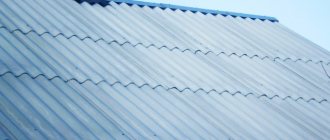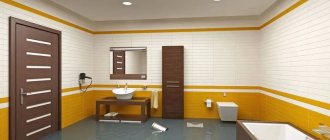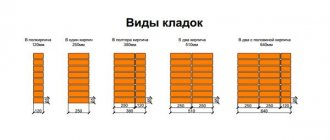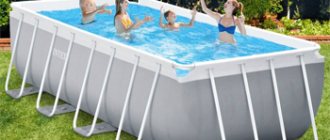All temporarily unused structures that need to be preserved during the period of their forced inactivity need conservation. One of these structures is an outdoor swimming pool, which is actively used only in the summer. Before the onset of the first autumn frosts, the artificial reservoir must be mothballed. After all, the main danger to the structure lies in the movement of the soil adjacent to the walls of the outdoor pool bowl. This problem can be overcome by using water that is prepared in a special way and left in an outdoor pool for the winter. Before filling the reservoir bowl with water, the equipment is dismantled and plugs are installed. A team of professionals is called in to carry out the entire range of conservation work on the property. If desired and if there is time, the owner of a country house can carry out all the necessary operations independently. Let's take a closer look at the procedure for performing the work and the features of its implementation.
First of all, we invite you to watch a video with an example of conservation work:
- 2 Dismantling removable equipment
- 3 Preservation of the filter system
- 4 Compensators: what are they and why are they needed?
- 5 Choosing a coating to protect the water surface
- 6 When can re-preservation begin?
Draining and cleaning the pool
Before you begin draining the pool water used for swimming in the summer, you must remove the chemicals from the autochlorinator (disinfectant dispenser tank). After this, the entire system is washed in circulation mode for about 10-15 minutes. Then the “summer” water is drained from the bowl of the swimming pond.
The bottom and walls of the pool bowl are cleaned with a viscose sponge or a plastic brush with soft bristles to remove dirt and deposits, and detergents are actively used. When choosing cleaning products for washing the bottom and walls of the bowl, follow the advice of the manufacturer of the facing material. Preference is usually given to chemicals produced by German companies. Although many Russian products have good washing and cleaning properties.
Cleaning the bottom of the bowl of an outdoor swimming pool from contaminants, carried out using special equipment or available tools
Particular care must be taken when cleaning film coatings that can be damaged as a result of extreme exposure to chemicals of dubious quality.
When tidying up the bottom and walls of the swimming pool bowl, do not forget about cleaning the metal parts that are in direct contact with water from deposited deposits. Here we are talking about stairs, handrails, spotlights and other auxiliary equipment used in the operation of the structure.
When working with any household chemicals, you should adhere to generally known safety rules. Work must be carried out in special clothing (rubber boots, gloves, water-repellent robe with a hood). It is advisable to protect your eyes and respiratory organs using goggles and special masks. Disinfectants and cleaning solutions should not be allowed to leak into the environment.
Dismantling removable equipment
It is recommended that all removable equipment be removed during the pool’s hibernation period and stored in a warm, dry room. The main elements of the structure's hydraulic system are subject to dismantling: the filter unit, heating system, counterflow device, etc. When starting to dismantle the filtration unit, turn off the power to the filter. Then drain the water through the tap, open the lid and transfer the filtrate to another container. After this, the filter is thoroughly washed. Then drain the remaining liquid by switching the valve to emptying mode. Next, the filtration unit is placed in the selected storage location until the next summer season. Elements of the hydraulic system that are not subject to dismantling must be freed from water.
Recent Entries
Lilac perennials that are beautiful, compact and do not crowd out other plants Why when buying seedlings you should not take the sellers’ word for it and how to determine the age of the plant using 3 signs Tomato seedlings have turned purple or whitish: why the color has changed and how to save the plants
Before filling the pool with water, remove all lighting fixtures built into the structure of the structure. At the same time, remove the protective glass, remove the device from the niche, insulate the wire, take it upstairs and attach it to the side of the pool. Foam plugs cover the recesses in which the lighting fixtures and skimmer were located. The same plugs are also placed in the nozzles that remain uncovered by water in the pool during the winter. Special plugs are used to close the free ends of the drains.
Preservation of the filter system
Having finished cleaning the pool and dismantling the equipment, they begin to fill its bowl with water with preservative additives dissolved in it. As such an additive, they usually use a product called “Puripul”, which is produced by a German company. This drug prevents the appearance and development of algae, fungi, bacteria, and silt deposits in unfrozen water. To carry out the preservation procedure of the filter system, the water level must be brought to its previous value. In accordance with the instructions supplied with the filter by the manufacturer, set the backwash mode on the equipment. Do not switch the filter valve while the pump is running, as this may cause system failure.
After backwashing is completed, the filter switches to compaction mode for 10-15 s, and then to normal filtration mode. In this mode, conservation water is forced through the filter system for two to three hours. After this time has elapsed, the water from the pool is partially drained. The drainage stops when the water level is 10 cm below the side nozzles.
Puripul contains quaternary ammonium compounds (less than 20%), so its addition to pool water is strictly dosed. The dose depends on the level of water hardness, measured in degrees of hardness (°F) or milligram equivalent per liter (mEq/l).
- If the hardness does not exceed 3.5 mEq/l, then for every 10 cubic meters of water add 0.4 liters of Puripula.
- If water hardness reaches 5.3 mEq/l, then the dose of the drug used to preserve water in the pool increases to 0.6 l.
Before adding, “Puripul” must be diluted in water, with each part of the drug containing 5 parts of water. The resulting solution is evenly distributed over the water surface of the pool and mixed with the bulk of the water. The effectiveness of the drug depends on the level of chlorine and algaecide in the water. A decrease in the effectiveness of Puripul occurs when the concentration of chlorine in water is 1 mg/l. Knowing this, you should not increase the dose of chlorine and algaecide in the water during the period of re-opening the pool, which is carried out in the spring months. After all, Puripul makes cleaning the pool much easier after the end of hibernation.
Preservation of a composite (plastic or concrete) pool for the winter
This is a structure whose bowl is made of several layers of material and therefore boasts strength. And the technology of its shelter, in principle, does not differ from that described above, it just has some nuances.
When carrying out this procedure, the following rules must be observed:
- take all measures strictly before the onset of the first frost;
- be sure to leave a certain volume of liquid;
- install the maximum possible number of compensators;
- pay increased attention to the quality of filtration.
A few details: it is extremely important to carry out chlorination - at least 2-3 hours, so that all H2O receives a sufficient “antiviral charge”.
And the second point: the waterline should go 10-15 cm below the nozzles, skimmer and other technological equipment - focus on such a conventional mark when you pump out.
Compensators: what are they and why are they needed?
To reduce the load from ice (frozen water) on the walls of the pool bowl, compensators are used. Compensators are objects that can change their volume when external pressure increases. In other words, these are those objects that can shrink when water expands when it freezes. Compensators include all empty plastic containers (canisters, five-liter bottles of drinking water, etc.), as well as tires and pieces of foam plastic.
The use of plastic bottles as compensators for the expansion of water when freezing during the conservation of an outdoor pool for the winter
Compensators are tied with a synthetic cord and placed along the center line of the swimming pool. In this case, plastic containers must be buried a little, using bags of sand or other weighting agents. It is not recommended to use metal objects as anchors, which may leave traces of rust on the bottom of the pool bowl. In addition to the center of the reservoir, compensators are also installed on the sides. Here it is better to use foam blocks, which should be tied into a “garland” and placed around the perimeter of the pool, retreating from the sides by 8–10 cm.
Choosing a coating to protect the water surface
Protecting the water surface with a special coating is considered the last step in the winter conservation of outdoor pools. This stage does not bring any trouble to the owners of those structures that already use coatings to protect the pool water from contamination and cooling in the summer. True, only those covering materials that can withstand temperature changes, as well as the severity of the snow mass, are suitable for year-round use.
Tent coverings are made from tarpaulin, polyvinyl chloride film and other materials that can protect the water column from precipitation and other contaminants.
Bubble blankets are inexpensive types of heat-insulating coatings that can accumulate solar energy. Blankets are suitable for protecting a pond in winter
Automatic roller blinds for swimming pools allow you not only to protect the water surface from pollution, but to extend the swimming season, keeping the water temperature in the pool at a comfortable level
Plastic pavilions are considered an expensive type of year-round protection for outdoor pools. These structures are made from rounded aluminum profiles and polycarbonate sheets that can retain heat inside the structure
Operation of an outdoor (stationary) swimming pool in winter is possible using modern systems for electric heating of water in an artificial reservoir
It is not recommended to cover outdoor pools with homemade wooden shields and metal structures resting on the sides of the structure. There is a high probability of damage to the walls of the bowl and the body of the artificial reservoir.
General recommendations for preparing for winter
Whatever type of pool you have. In winter it needs conservation. This is especially important for pools installed outdoors. Adverse weather conditions can greatly impact your pool. Precipitation in the form of snow and rain will not benefit your pool, not to mention icing and low temperatures without appropriate treatment.
When preserving your pool, evaluate in advance the design of your pool and its other features regarding operation and installation location.
What are the stages of preservation for the winter?
Let's go through the action items that need to be done before winter:
- Remove the water and rinse the main bowl.
- We flush the filtration system.
- We disinfect the main bowl and filters using aggressive detergents.
- We dismantle pumping stations and filters.
Is your pool a permanent or frame type?
The preparatory stages differ for each type of pool. If you live in a warm climate or your pool is located in a heated room, I hasten to please you, in this case your pool does not need conservation.
Let's begin the process of preparing for conservation. Great importance is paid here to the type of wall materials, coating, structural details, and the depth at which the main elements are located.
When can reactivation begin?
If you carry out all the procedures for preserving a stationary pool correctly, you can ensure a successful winter for this structure. With the arrival of warm days, the ice in the pool is allowed to melt naturally. It is strictly forbidden to crush ice, as this is likely to damage the bowl of the structure. After the pool is re-opened and the water is purified, the reservoir begins to operate in accordance with its purpose.
- Author: marika
Rate this article:
- 5
- 4
- 3
- 2
- 1
(2 votes, average: 5 out of 5)
Share with your friends!
Nothing is simpler
So, now you have clear instructions for action:
- drain the water
- rinse the pool,
- pour water with chemicals, filter,
- wash and dry equipment,
- put plugs,
- place half-empty plastic bottles,
- cover with an awning.
After this, you can safely leave your pool to spend the winter at the dacha. And no frost will be scary for him. And with the arrival of the swimming season, it will again delight its guests with warm clear water for many years to come.
IMPORTANT! The ice in the pond should melt naturally. There is no need to split it, as sharp chips can damage the thicket of the structure.











